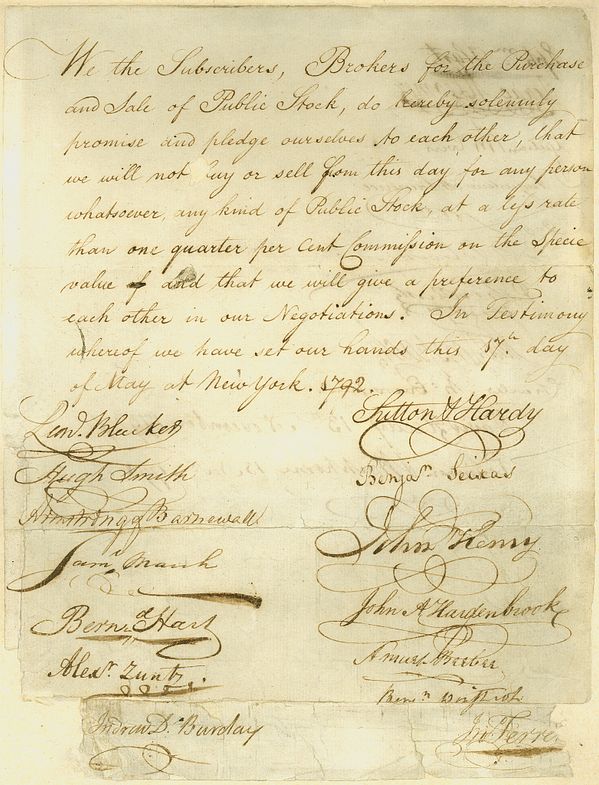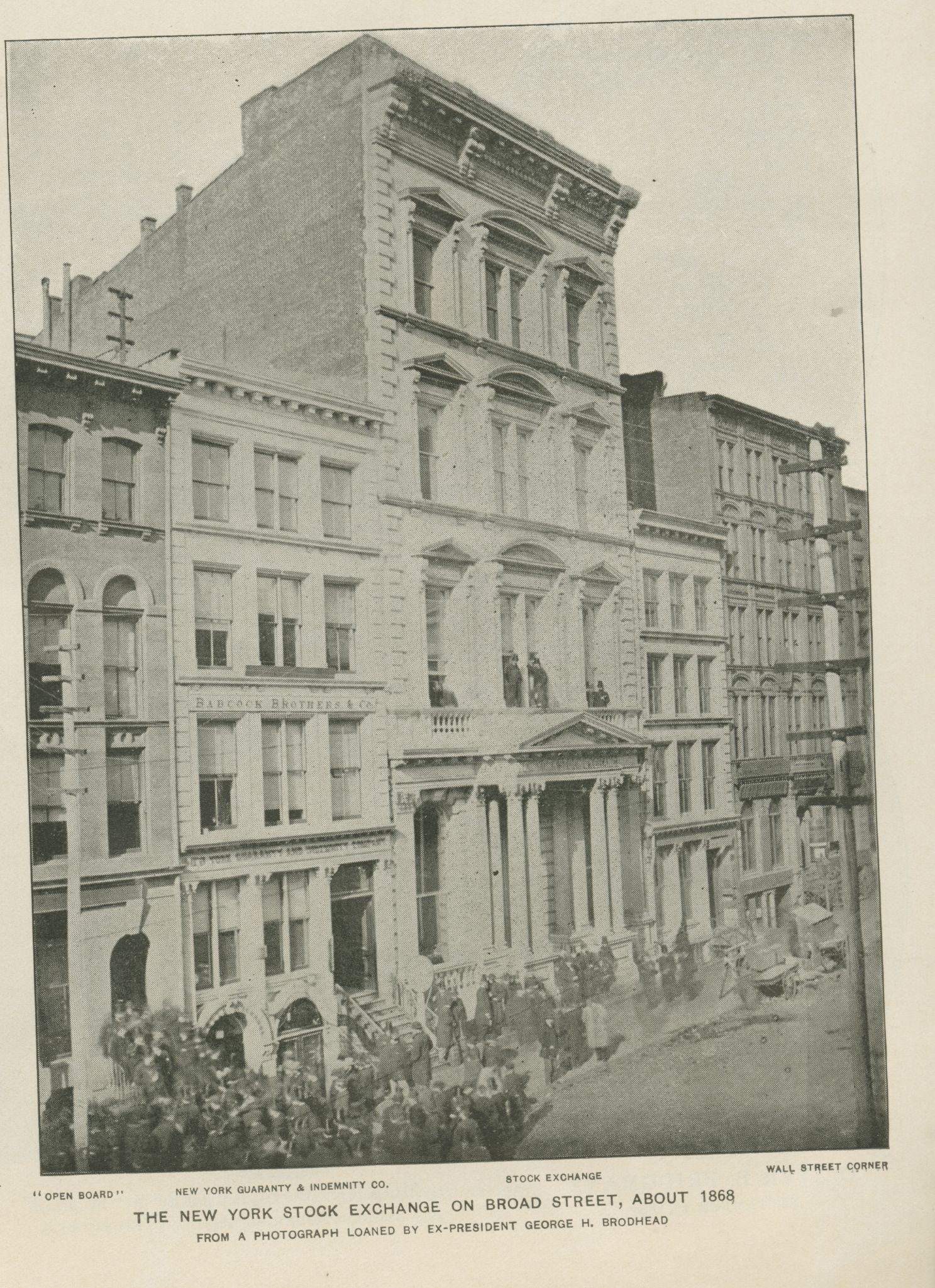
The History of NYSE
The New York Stock Exchange is where icons and disruptors come to build on their success and shape the future. We’ve created the world’s largest and most trusted equities exchange, the leading ETF exchange and the world’s most deterministic trading technology. Our data, technology and expertise help today’s leaders and tomorrow’s visionaries capitalize on opportunity in the public markets.
About the NYSE
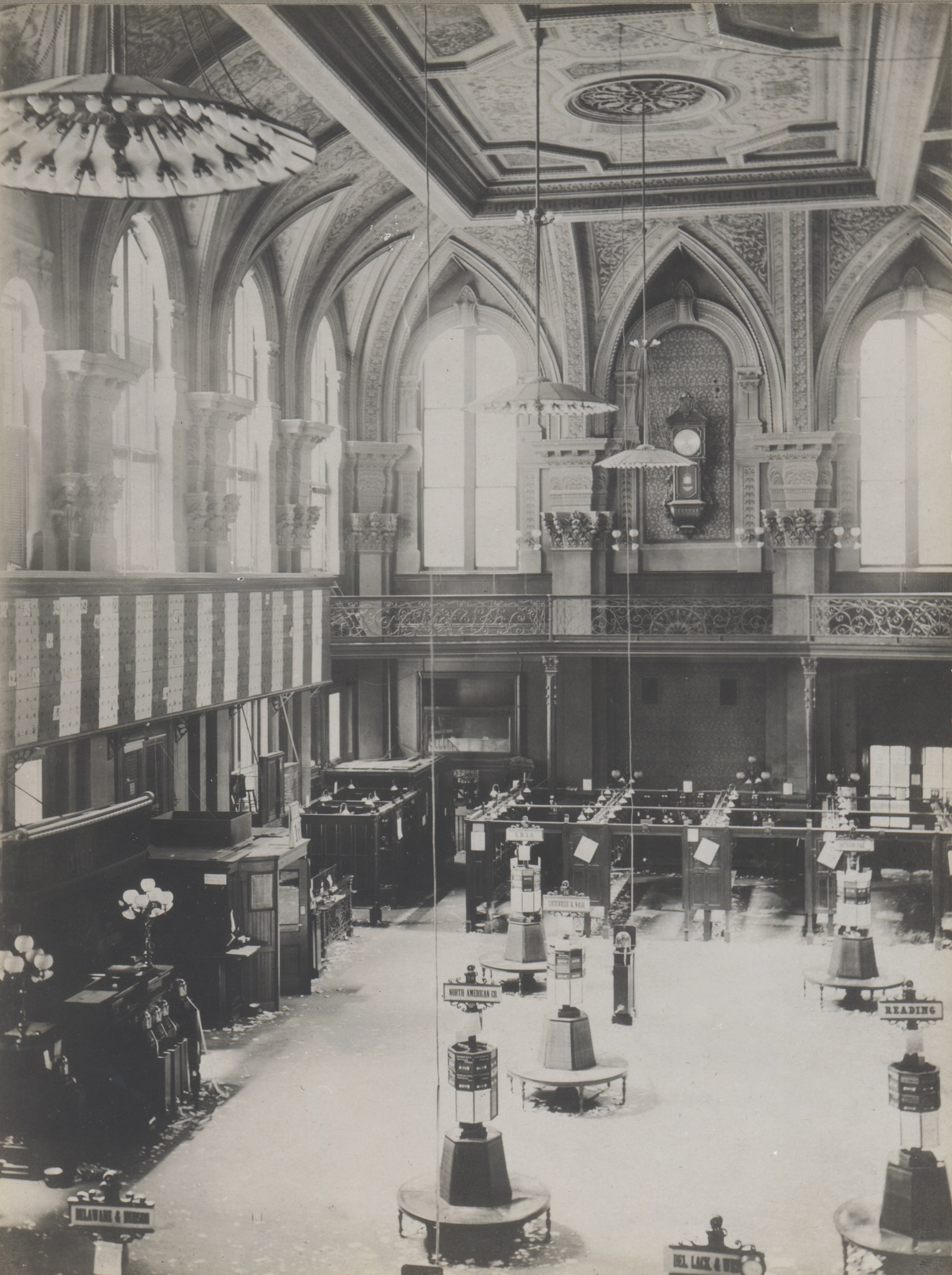
NYSE Trading Floor, 1881 with annuciator board pictured left.
The introduction of the stock ticker in 1867 revolutionized market communications by making it possible to quickly transmit market information across the United States, significantly narrowing the gap between Wall Street and Main Street. When telephones were installed at the NYSE in 1878, the market became even more efficient, and on December 15, 1886, trading volume topped 1 million shares for the first time.
One of the most familiar images of the NYSE, the loud ringing of a bell signaling the opening or closing of the day’s trading, was first used at the Exchange in the 1870s with the advent of continuous trading. Critical to ensuring orderly functioning of the marketplace, the original bell of choice was a Chinese gong.
As the stock market continued to grow, the NYSE in 1903 moved into a new building with a much larger Trading Floor, designed by George B. Post. Post designed an impressive interior space, with paneled Georgian marble walls, huge windows and a gilded ceiling that stands four stories above traders’ heads. The statuary pediment titled, “Integrity Protecting the Works of Man” was designed by the eminent sculptor, John Quincy Adams Ward. Today, the NYSE building is one of the most exclusive and sought-after event spaces in New York City, poised at the center of global financial markets.
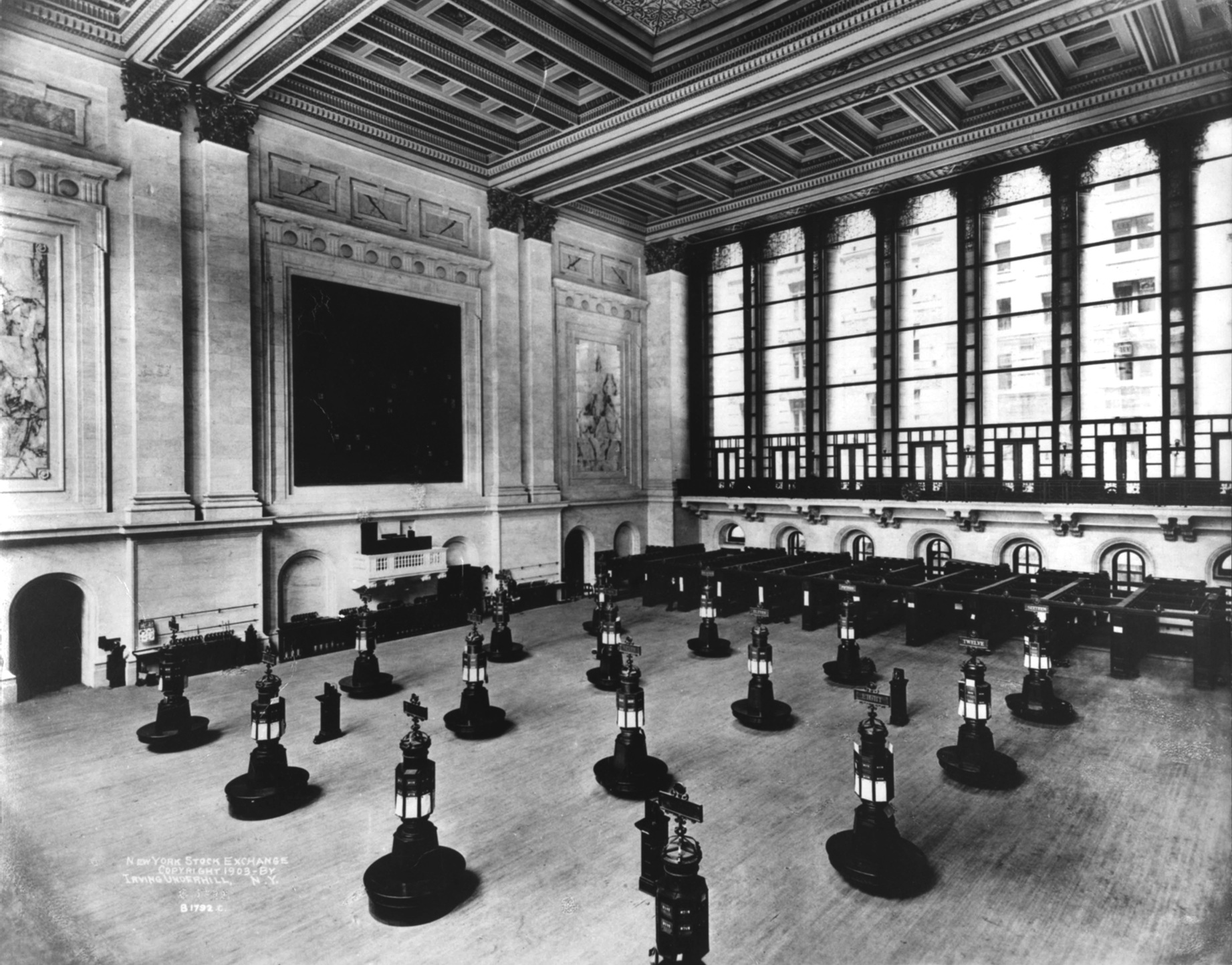
NYSE Trading Floor in 1903.
When the current NYSE building opened in 1903, the gong was replaced by a brass bell — electrically operated and large enough to resonate throughout the voluminous main trading floor. Today, each of the four trading areas of the NYSE has its own bell, operated synchronously from a single control panel.
Modulating the temperature of the open-air space stretching nearly 100 feet above the Trading Floor required the services of engineer Alfred Wolff. Wolff designed and installed three ammonia-absorption machines, each with a cooling capability equivalent to one hundred and fifty tons of ice. This industrial feat made the NYSE the first air-conditioned building in North America. In addition, the room had some of the newest trading technologies including modern tickers, telephones, and a pneumatic tube system to send orders and market data throughout the building.
Trading Floor and office space were expanded further in 1922 with construction of the 11 Wall Street addition. The trading posts, dotted through the center of the room began as simple signposts, but expanded over time. The NYSE also held its inaugural Christmas Tree Lighting, a Wall Street community event that has been celebrated annually, since 1923. In 1928, the Quotation Department was developed to provide the most recent stock quotations to member firms. Uniformed clerks wearing headsets were in continuous contact with the trading floor and posted the current bid and asked quotes on the board above the seated telephone operators. Around 35,000 stock quotations were furnished daily in 1931. An automated quotation system replaced the department in 1960.
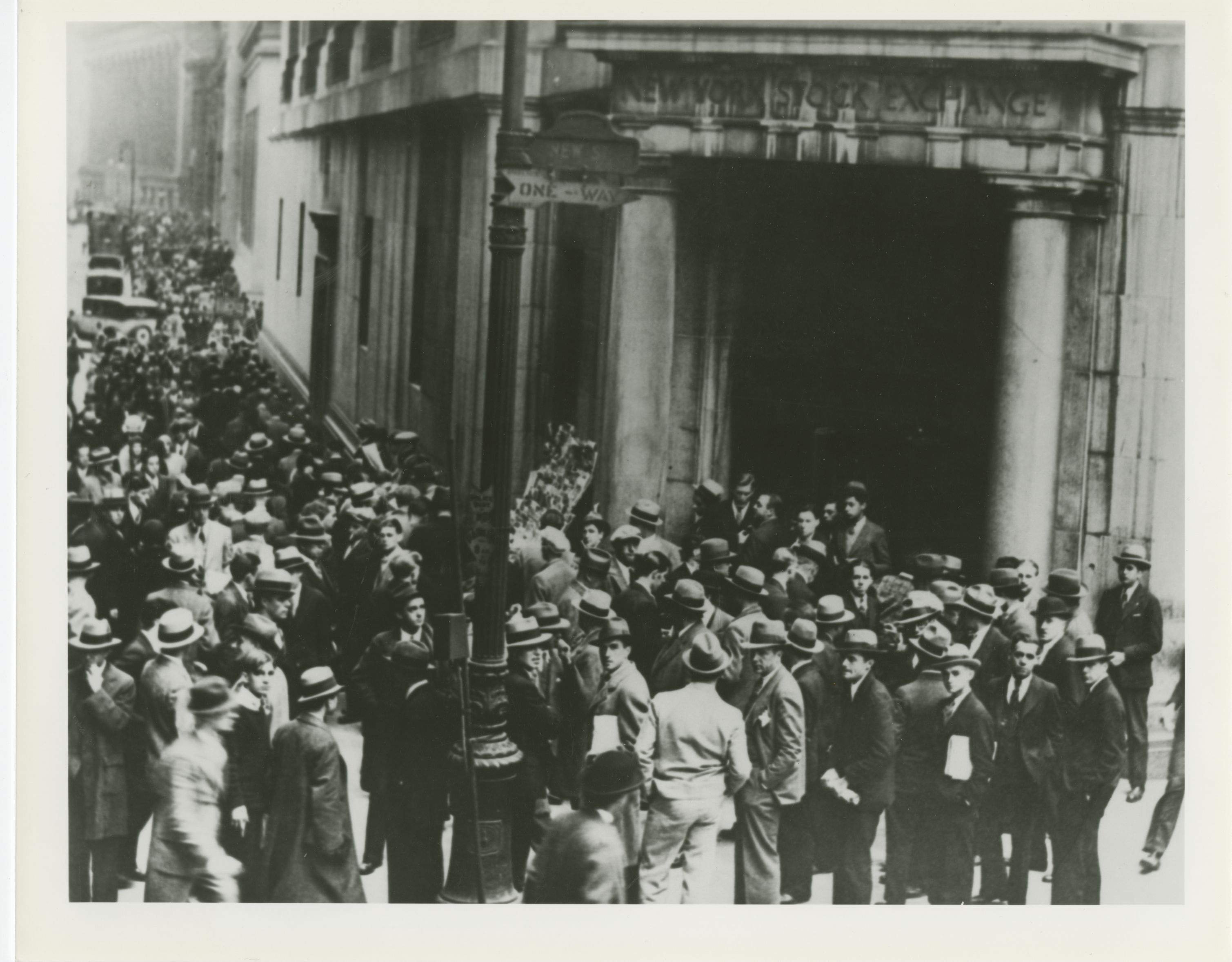
1929 Stock market "crash."
On Tuesday, October 24, 1929, the market “crashed.” Prices plummeted as brokers sold their customers’ stocks to cover losses when investors could not meet the calls for more margin. Over 16,000,000 shares were traded, a record which would not be surpassed for 39 years. The crash focused attention on the securities industry and led to several important reforms. To supplement the NYSE’s own self-regulatory activities, the U.S. Congress in 1934 created the Securities and Exchange Commission to regulate operation of the nation’s securities markets.
In the 1930s, new trading posts were installed that allowed market makers to stand outside the posts and coordinate the trading of multiple stocks at each location. Initially, a group of clerks, tube men and runners would work inside the horseshoe transmitting orders and recording stock quotes and sales.
The market languished during World War II and encouraged investing in victory through the purchase of bonds via the war loan of the United States. Due to a shortage of male employees, women worked as pages and reporters on the trading floor for the first time in the Exchange’s history. The market recovered its vitality in the post-war years. The NYSE’s educational efforts to acquaint potential investors with the long-term benefits of owning “Your share of American business” broadened stock ownership considerably during the 1950s and 1960s.
Although the appearance of the Trading Floor seemed unchanged from the 1930s, automation systems installed in other parts of the building began to assist traders during the 1950s. The introduction of technology over the next decade enabled the rate of trading to increase substantially from just over a billion shares traded during 1960 to over three billion in 1970. The first computers made by IBM (NYSE: IBM) were installed at the NYSE. During the 1960s, computer data processing technologies were first applied to the NYSE’s market operations. Electronic capture of trading data and dissemination of market information via high-speed data networks greatly increased market efficiency. In the following decade, the NYSE launched its SuperDot system which electronically delivered an order from the broker’s office directly to the NYSE trading post and then sent an execution report back within seconds.
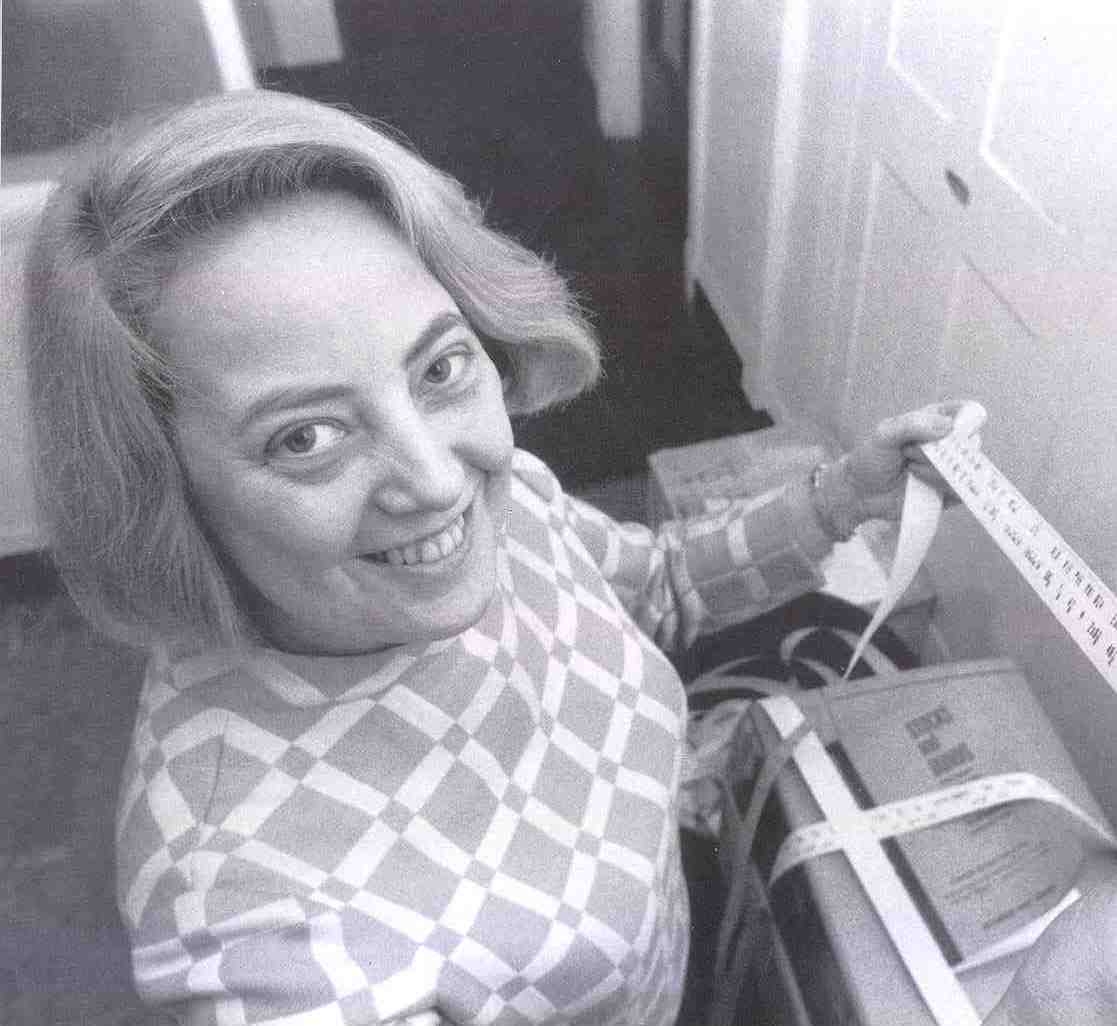
The first permenant female member, Muriel Sibert in 1967.
The technological advancements of the Trading Floor from the 1960s-1970s were met by its diversification. The first permanent female member, Muriel Siebert, was inaugurated on December 28, 1967. Siebert’s entry to the Floor was followed by the first Black member, Joseph L. Searles III, on February 12, 1970. The next year, Daniels & Bell Inc., followed by Russell L. Goings, Jr.’s First Harlem Securities, became the first Black member firms. In 1973, Ambassador Harold Doley became the first Black member to self-fund the purchase of his seat before founding one of the Exchange’s longest-lived independent Black member firms. Later in the decade, Alice Jarcho became the first full-time female floor broker in 1976, and in 1985, Gail Pankey became the first Black female member of the NYSE.
In the 1970s, computer display monitors showing current market data were added atop the old trading posts in a transitional program to modernize trading floor technology. The floor underwent its first major renovation in five decades starting in 1979 to incorporate the latest technologies to the trading posts. The space frame that is still visible was added above the floor, distributed power, data cables as well as air conditioning and supported the trading post superstructure.
Construction on the New York Futures Exchange Trading Floor also began in 1979. NYSE Futures became the most modern futures trading environment of its time. Simulated trading sessions were conducted before the opening of the New York Futures Exchange in Spring 1980. At the time of its opening, the New York Futures Exchange had 1,569 members, making it the largest membership of any financial future exchange in the nation.
Other milestones include February 8, 1980, when market capitalization of NYSE-listed topped $1 trillion. On October 19, 1987, “Black Monday,” the market had one of its most dramatic falls in history. The Dow Jones Industrial Average plunged 508 points, losing a record 22 percent of its value, on a volume of 604 million shares. In the following months, the NYSE introduced nearly 30 changes aimed at dampening price volatility, streamlining procedures, and bolstering the capacity of NYSE electronic systems to handle sustained trading in hundreds of millions of shares.
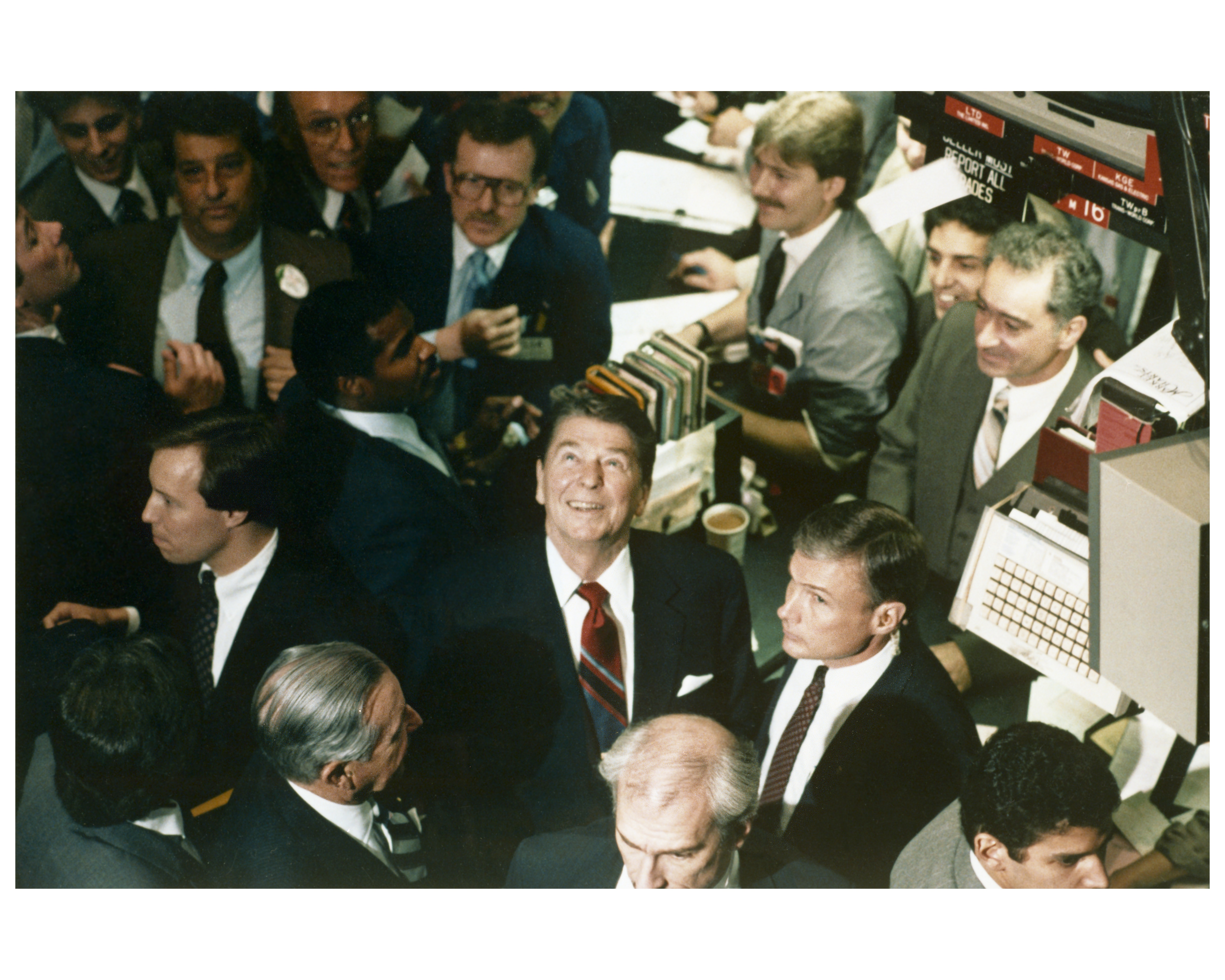
Ronald Reagan visiting the floor of the NYSE in 1985.
Trading floor facilities were reengineered during the 1980s and 1990s to streamline market processes and keep ahead of the NYSE’s mounting trading volumes. The first handhelds were introduced on the Trading Floor in 1992. Technology improvements in 1995 included adding flat panel data display screens on the trading posts. This was the country’s first large-scale use of this new technology. By 1996, the Epson Handheld Computer allowed brokers to access the NYSE Wireless Data System that was introduced. This emerging technology allowed increased volume leading to the first one billion share day on October 28, 1997.
In 2005, NYSE Hybrid Market was launched, creating a unique blend of floor-based auction and electronic trading, a “high tech, high touch” model. Major advances occurred in market data display and handheld technology, leading to the elimination of the open outcry system on the floor, in 2006, when the NYSE merged with Arca, short for Archipelago Exchange, the first all-electronic exchange in the U.S. on which stocks and options are traded.
In the early 2000s, changes occurred across the NYSE. On November 16, 2005, Intercontinental Exchange (NYSE: ICE) listed on the NYSE. In 2006, the New York Stock Exchange (NYSE), Archipelago (Arca), and the Pacific Exchange (PCX) merged to form the publicly traded NYSE Group, ending membership ownership of the Exchange. In 2008, the NYSE acquired the American Stock Exchange, becoming the third largest U.S. options market. By 2013, ICE acquired the NYSE and remains the parent organization of the Exchange today.
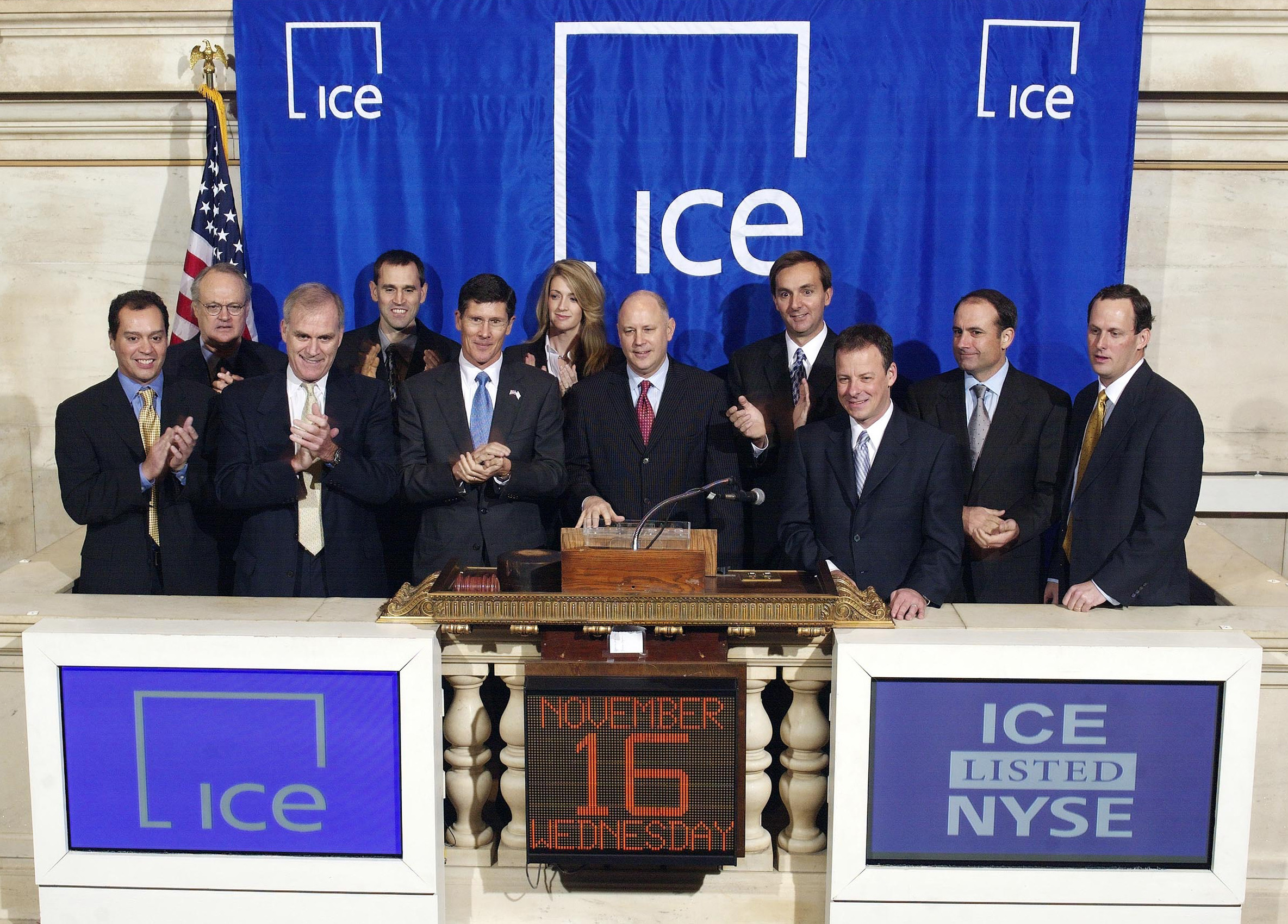
ICE listing on NYSE in 2005.
The current floor began to take shape in 2011 with the addition of new broker booths that offer enhanced functionality to floor broker firms and new trading posts that feature high-definition data display screens and the most current workstations. A host of new systems, such as the electronic Specialist Display Book, Broker Booth Support System (BBSS), and wireless e-Broker System, provide powerful tools to the NYSE broker.
In 2016, Phase 1 Pillar, a new integrated trading technology platform to enable member firms to connect to all NYSE equities and options markets using a standard protocol and improve efficiency and reduce complexity for customers, while enhancing consistency, performance, and resiliency, was completed. By 2019, the NYSE marked the successful migration of its trading technology to NYSE Pillar. To date, NYSE, NYSE American Equities, NYSE Arca Equities, NYSE National, and NYSE Texas have been migrated to NYSE Pillar matching engines, and NYSE Pillar Gateways are available for order entry on each market.
In 2018, Stacey Cunningham became the first woman to lead the NYSE when she was named the Exchange’s67th President. In 2021, Tigress Financial Partners became the Exchange’s first disabled and female-owned pit brokers in the marketplace, founded by CEO Cynthia DiBartolo. This was followed by the naming of the second female and 68th President, Lynn Martin
The NYSE’s technological advancements proved invaluable during the COVID-19 pandemic. On March 23, 2020, for the first time in its history, the NYSE operated without a Trading Floor following the closure and shift to full electronic trading due to COVID-19. While electronic trading remained uninterrupted, data showed operating with the Trading Floor provides investors the highest level of market quality. The Floor partially reopened on May 26, 2020. Other volatile moments in the Exchange’s history include September 11, 2001. The re-opening of the markets on 9/17 following the 9/11 terrorist attacks represented the resilience and importance of the New York Stock Exchange as the heart of the global capital markets.
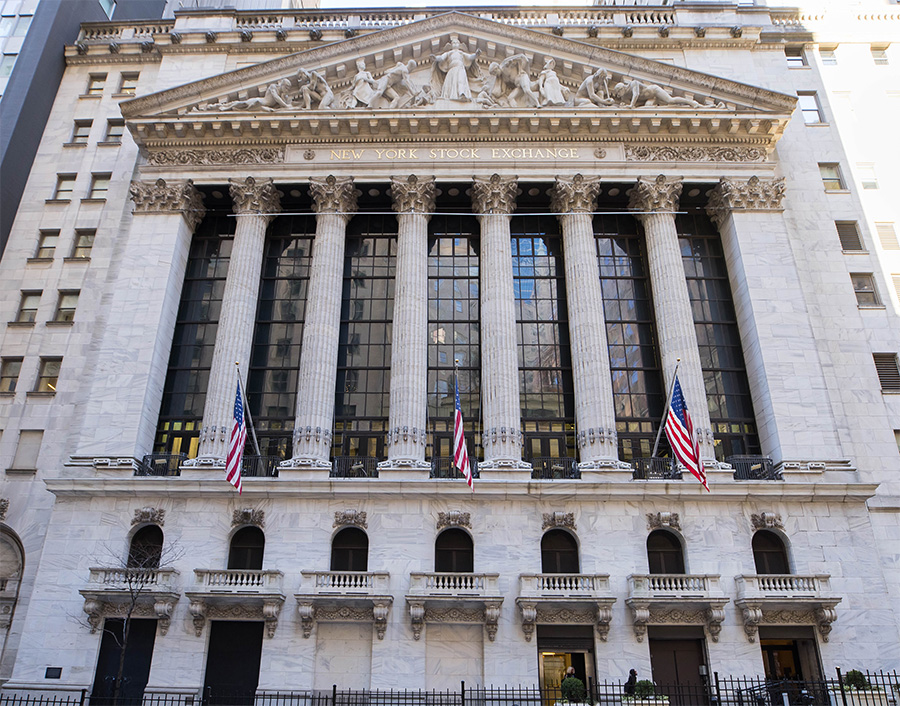
The NYSE Facade
